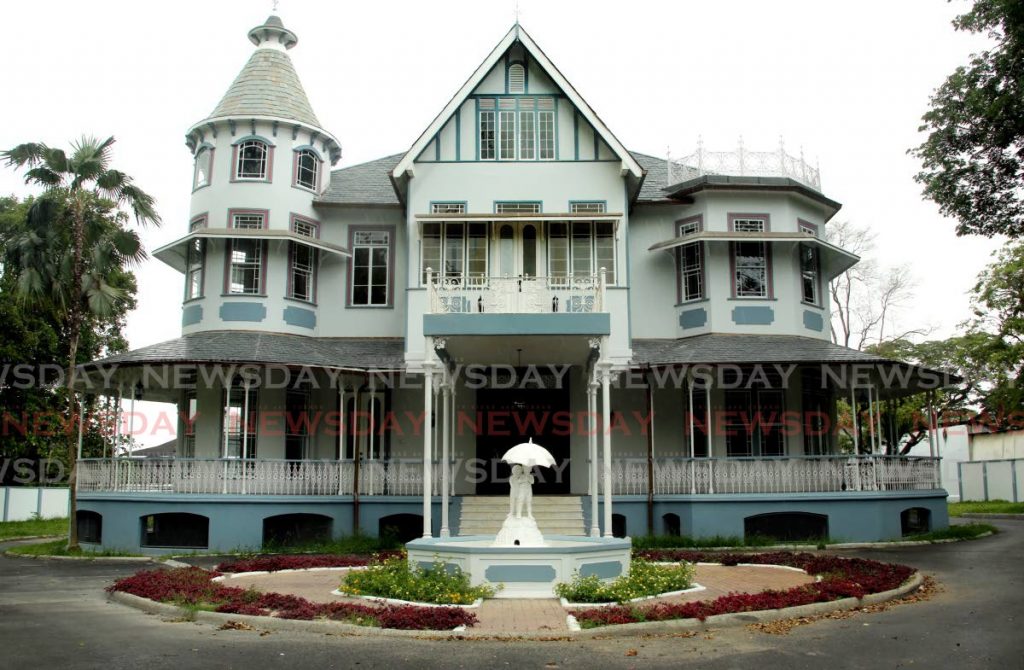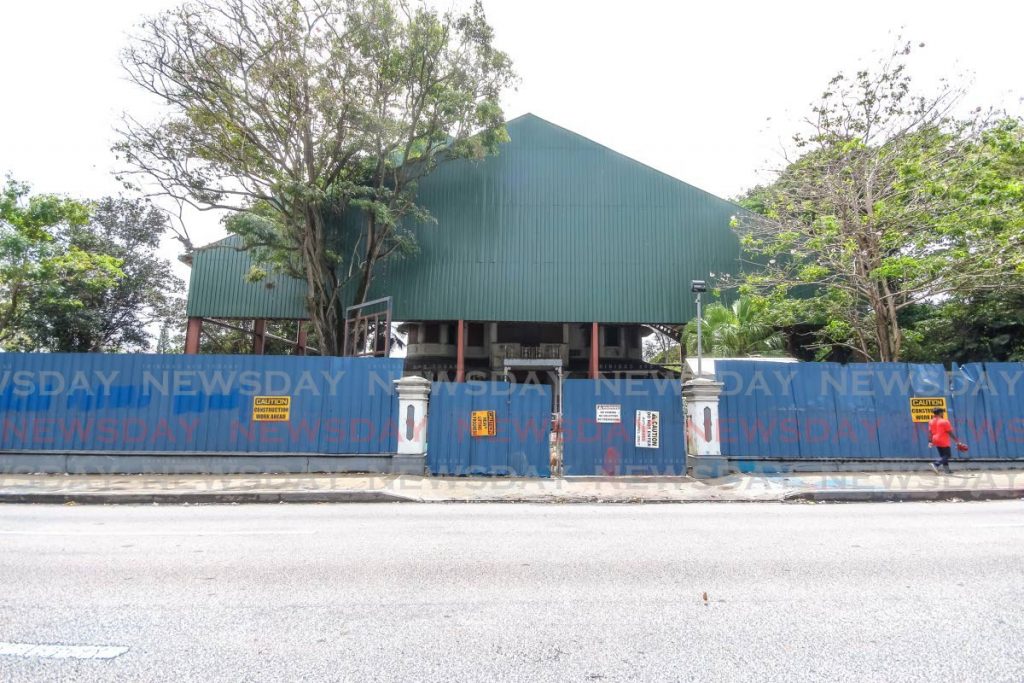Mille Fleurs restored, ceded to National Trust

Mille Fleurs, one of the iconic Magnificent Seven historical buildings lining Queen’s Park West, has been restored.
At the handover ceremony on Thursday, project managers the Urban Development Corporation (Udecott) officially gave the building back to the people via the Ministry of Community Development, Arts and Culture.
It will then be ceded to the National Trust, a statutory board charged with overseeing the management and preservation of historical monuments.
Mille Fleurs is the last of the major restoration projects sanctioned by Cabinet in 2016 to be delivered, following Castle Killarney, (Stollmeyer's Castle), completed in 2018; Whitehall and President’s House, completed last year; and the Red House, completed in January. Restoration work on the building started in 2018, overseen by Udecott and the Office of the Prime Minister, with Fides as the contractor.
Culture Minister Nyan Gadsby-Dolly, speaking to reporters at Mille Fleurs after the event, said restoration and renovation work cost about $10 million.
The building was in an advanced state of disrepair and thought to be so far gone that it would have had to be condemned. Udecott relied on the assistance of restoration experts from Cuba to help with the project.
“We did not want to demolish the building. No one wants to lose a historical building. We were happy that when the Cubans assessed it they determined it could be saved,” Gadsby-Dolly said.
Much of the original structure was retained, she said, and what could not be saved was restored in a style fitting the time period. Much of the first storey was sound,, including the staircase. Most of the damage, she said, was on the second storey, with the roof, ceilings and floors upstairs needing to be replaced or restored.
The stables at the back were converted to offices, and that’s where the National Trust will work from. The trust will also be allowed to rent out office space to other NGOs. The main building will be rented out for special events, including cultural events and weddings.

Mille Fleurs is French for "a thousand flowers," and in keeping with that theme, Gadsby-Dolly said part of the compound will also be transformed into a tropical flower garden, which she expects will be a major tourist attraction.
A time capsule was buried on Thursday right in front of the building, containing the front pages of all three daily newspapers, a covid19 face mask, a $100 dollar bill and a booklet about all of Udecott’s restoration projects. The capsule will be opened in 50 years.
The building was originally a residence, built in 1904 in a Victorian style for Dr Enrique Prada, the Venezuelan-born first mayor of Port of Spain. Among the guests at the restoration ceremony were two of his descendants, Heather May-Wittet – who wore her great-grandmother’s earrings for the event – and her daughter Jessie.
“It’s very emotional and fantastic to see this,” she said. The family shares some of their personal photos of the building with the restoration team to aid with reconstruction.
Port of Spain mayor Joel Martinez also celebrated the restoration and said the city would continue to improve and enhance public spaces, including historical districts like the Brian Lara Promenade, Woodford Square and Broadway.
“When you do these things, you’re telling people you are starting to believe in (the country’s) history; that we have artifacts and monuments that we can be proud of and that we have a rich history to speak of and share with future generations.”
About Mille Fleurs:
Mille Fleurs was built in 1904, when lots became available on what was formerly the St Clair Farm. It was the home of Dr Enrique Prada and his family for 19 years and came to be known as Prada House.
Built in the French Provincial style by the famous George Brown, the house was a gift to Prada from his wife, who gave the building its name, possibly because there were lots of flowers around it.
Prada, born in Venezuela in 1867, came to Trinidad at an early age and went on to become mayor of Port of Spain from 1914-1917. He died in 1944.
In 1923, the mansion was sold to Joseph Salvatori, who made it his family’s residence. After his death in 1959, his widow remained the sole occupant until she died in 1971. The building subsequently became the property of the Salvatoris' only daughter, Mrs Pierre Lelong, who lived in Paris.
In 1973, the property was sold to businessman George Matouk. The home was rarely occupied by the Matouks, and in June 1979, the government bought it for approximately $1 million.
Owing to under-use and lack of maintenance, the building reached an advanced stage of deterioration, even after the Law Association leased it – but did not use it.
In April 2016, the Prime Minister chaired a Cabinet sub-committee to look at the renovation of Mille Fleurs, Killarney , President's House and the Red House.
See https://newsday.co.tt/2020/01/02/mille-fleurs-uncovered/


Comments
"Mille Fleurs restored, ceded to National Trust"